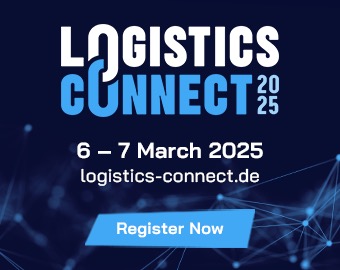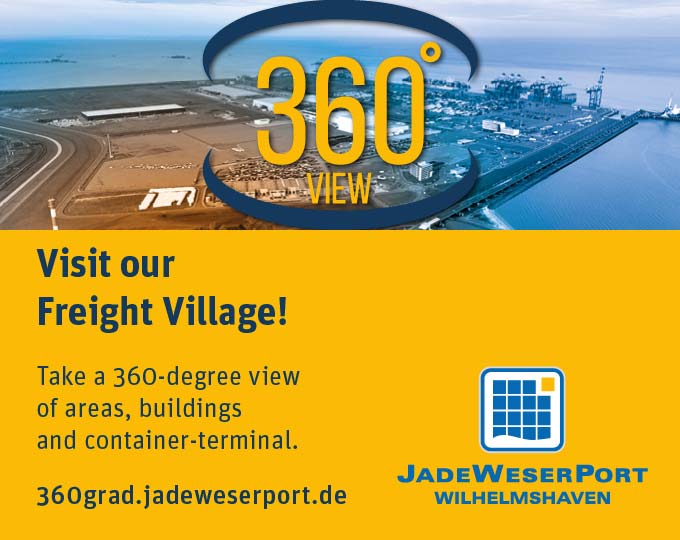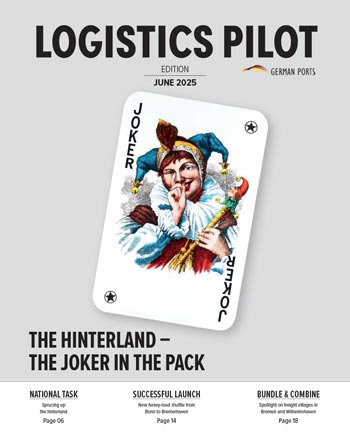Slovakia, the Czech Republic and Hungary have many things in common. They are not only export nations but are also important locations for the automotive and supplier industries too. By contrast, however, inland waterway transport in these countries tends to take second stage.
photos: iStock/br3kkancs/Vladimir Timofeev, GTAI, Rail Cargo Operator, SACO Shipping, Stefan Bungert, Cuxport, EGIM, bremenports, privat, Generaldirektion Wasserstraßen und Schifffahrt
A look at the key figures shows: for Slovakia, the Czech Republic and Hungary, Germany is the most important trading partner, both as a supplier and as a buyer country. Conversely, according to information from the Federal Statistical Office in May of this year, these countries rank 10th (Czech Republic), 13th (Hungary) and 22nd (Slovakia). And the figures from the first months of this year suggest a further rise. While 7.3 per cent of Germany’s total foreign trade turnover was accounted for by these three states in 2020, it was already 7.6 per cent between January and May 2021.
“These countries are genuine export nations that generated a combined foreign trade turnover of around 672 billion euros last year, of which trade with Germany accounted alone for around 164 billion euros. Their importance is also reflected in the fact that the Czech Republic and Hungary rank above Russia and Japan, for example, as Germany’s key trading partners, with Slovakia ranking above India, Mexico and Can-ada, among others,” said Regina Wippler, economic expert at Germany Trade & Invest (GTAI) for the Czech Republic and Slovakia, outlining the starting position. And her col-league Fabian Möpert, GTAI economic expert for Hungary, added: “Another thing these countries have in common is that they have long since ceased to be merely the West’s extended workbench and are now heavily industrialised nations. Here, the automotive industry, in particular, should be mentioned, many important international players and their supplier companies have settled in the region.” This is reflected in the list of the most important exports and imports. “From companies in metal processing and mechanical engineering to electrical and electronics industries to plastics and rubber producers, there are numerous sectors represented here that have more or less large overlaps with automobile manufacturing, but are also successful in other market segments and are increasingly succeedingin attracting research-focussed and innovation-intensive value-added steps,” said Wippler. In this sector mix, the relatively small Slovakia with its population of around 5.5 million has already been seen as the world champion in car production per capita for years.
Möpert has a clear answer to the question of why these nations are particularly attractive for foreign investors: “As members of the EU, all three countries offer fundamentally stable and competitive framework conditions for industrial sites. This is also regularly reflected in the business surveys conducted by relevant foreign chambers of commerce.” Furthermore, their geographical location is advantageous, also making them a logistics hub for transport to the east and south, the constantly improving infrastructure, to which the extensive EU subsidies also contribute, and the good qualifications of the local workforce. “In addition, Hungary is one of the most successful countries in the region in terms of foreign direct investment inflows,” Möpert reported. However, the GTAI expert has identified the weak points of the three countries as their high dependence on exports, the worsening availability of skilled labour and regional differences in economic development in the individual countries. Regarding his area of expertise, Hungary, he continued: “The confrontation course adopted by the Hungarian government towards the European Union could also have a negative impact in the future, for example if subsidies were no longer given.

“These countries are genuine export nations.”
Regina Wippler, economic expert at Germany Trade & Invest (GTAI), responsible for the Czech Republic and Slovakia

“The further expansion of infrastructure will provide important economic stimuli.”
Fabian Möpert, economic expert at Germany Trade & Invest (GTAI), responsible for Hunga
“The region is on the move”
A closer look at the percentage of individual modes of transport in freight transport in the Czech Republic, Slovakia and Hungary shows a similar picture in all three countries: around two-thirds of freight transport is carried by trucks, while rail accounts for around 20 per cent in each country. “Inland waterway transport has not, so far, played a key role. In Hungary it is well below five per cent, in Slovakia 0.6 per cent and in the Czech Republic 0.3 per cent. This mode of transport is currently used mainly to transport bulk goods, agricultural products, mining goods and oversized manufacturing parts,” said Wippler. Nevertheless, the ports in the capital cities of Prague, Bratislava and Budapest, in particular, are important interfaces when it comes to hinterland transportation. Besides these locations, the ports of Győr-Gönyű and Baja (in Hungary), Mělník (in the Czech Republic), and Komárno (Slovakia) have also established themselves as further water transportation hubs in recent years.
In order to further increase the efficiency of these transport hubs, a large number of projects have already been initiated or at least considered. These include, for example, the recently presented master plan for developing the port in Komárno with corresponding infrastructure and suprastructure, modernising the port in Bratislava, including the construction of an LNG terminal, and reviving the Czech plan for a canal connection between the Danube, Oder and Elbe to create another navigable link from the Black Sea to the North Sea and Baltic Sea. However, there is a lot of controversy about this project. Furthermore, near the Hungarian city of Záhony, which plays a central role in international rail freight transport, construction of a terminal for intermodal freight transport began in January of this year. Completion is due in the first quarter of 2022. “These examples show that the region is on the move and that further expansion of the infrastructure will provide important economic stimuli,” stated Möpert, with an optimistic view of the future.

“We simply have more exports than imports via the German ports.”
Niels Riedel, Sales Director at EGIM
This view is shared by Peter Hrbik, bremenports representative in the Czech Republic, who added another aspect: “The region with its important industries and its high performance transport and logistics sector has emerged stronger from the coronavirus pandemic. The companies there expect a positive economic development in the coming months. This is also evident from the projects mentioned earlier above.” Hrbik also sees a positive development with regard to digitisation in these three countries. “Due to the pandemic, many people have learned to appreciate the advantages of new technologies and have become much more open-minded towards them.”
Experts report from the field
Since the beginning of the 1990s, the intermodal transport operator EUROGATE Intermodal (EGIM) has been connecting the German seaports of Bremerhaven and Hamburg directly by rail with Hungary and the Budapest terminal BILK. At the same time, I.C.E. Transport Hungary has been acting as an agent for EGIM in Hungary since 1996, coordinating the pre-carriage and on-carriage by truck there, among other things. “We transport everything between Hungary and Germany that fits into a sea container by rail, especially automotive parts, frozen poultry and chemical products,” stated Lars Hedderich, Managing Director of EGIM. He emphasised: “First and foremost, we handle maritime container transport between Hungary and the German seaports, especially for overseas traffic from the Far East, to the USA and to Central and South America.” He estimates that 40,000 TEU is transported each year on this rail route – of which around 60 per cent can be attributed to the port in Bremerhaven and around 40 per cent to the port of Hamburg. “If necessary, we can also organise cargo from the deep-water port of Wilhelmshaven into our network,” added Niels Riedel, Sales Director at EGIM. He already has a plan for a fully integrated connection of Wilhelmshaven to the EGIM network – namely after the electrification of the Oldenburg-Wilhelmshaven and Sande-JadeWeserPort routes from 2023.
Between Bremerhaven and Budapest and between Hamburg and Budapest, the EGIM trains up to 680 metres in length are usually on the road for less than 30 hours – with up to six departures per week. They offer a maximum of 96 container spaces in each direction on this route, and a train’s engine can pull a total weight of 1,000 to 1,200 tonnes of cargo. For transport to/from Budapest, the responsible railway undertaking is boxXpress.de (in which EGIM has a stake). For the Austria-Hungary route, boxXpress.de uses EGIM’s Hungarian subsidiary Floyd. In this way, the entire route remains firmly in the hands of the Hamburg-based intermodal transport operator. “The economy in Hungary has enjoyed a stable development over the past 15 years but, unfortunately, to the detriment of the German northern ports,” said Hedderich. “This is because the options on the southern route are economically more attractive. For example, Bremerhaven is about three times as far from Budapest as the port of Koper. Of course, that also has an impact on logistics costs.” At the same time, Riedel points to the problem of the imbalance in traffic: “We simply have more exports than imports via the German ports when it comes to traffic towards Eastern Europe. This is a reason why we are constantly developing our network concept.”

“The pandemic has made many people appreciate the advantages of new technologies.”
Peter Hrbik, bremenports representative for the Czech Republic

“The economy in Hungary has continued to develop in a stable manner over the past 15 years.”
Lars Hedderich, Managing Director at EGIM

“Prague, Bratislava and Budapest are the most important hubs in the region.”
Matthias Steinhoff, Business Development Saco Shipping

“The expansion of car production facilities in Central Eastern Europe will be pursued in the long term.”
Oliver Fuhljahn, Head of Automobile Logistics Cuxport
“Southern ports are no alternative on the western route”
As a neutral NVOCC (non-vessel operating common carrier) service provider, SACO Shipping has also been represented by its own branches in Prague, Bratislava and Budapest for around ten years. “These are the most important hubs in the region. From here, we can reach any location in the respective country by truck within a day,” said Matthias Steinhoff, Business Development SACO Shipping. In the process, SACO Shipping offers its customers in the Czech Republic, Slovakia and Hungary the same container transport import and export services that the company also handles via its head office in Hamburg and the branch office in Bremen – regardless of whether LCL or FCL cargo is involved. Besides truck and train, SACO Shipping also has the option of providing air transport via its subsidiary SACO Groupair. “To date, air freight only constitutes a small part of our portfolio – the largest volumes by far are transported by road,” explained Steinhoff.
Furthermore, onward transport by rail has proven its worth, especially for imports from the USA that are delivered via Bremerhaven. When it comes to transporting containers to and from the CEE region, SACO Shipping is also regularly faced with the question of when to use the ports in northern Europe and when to use the options in southern Europe. Steinhoff has a plausible rule of thumb for this case: “Koper and the other southern ports do not really offer an alternative when it comes to transporting cargo westwards, for example to the USA or South America.” For cargo bound for the Far East, however, the situation would be different.
Cuxhaven is an important automotive hub
Cuxhaven is also intensively involved in trading with the Czech Republic, Slovakia and Hungary. Oliver Fuhljahn, Head of Automobile Logistics at Cuxport, has identified a strong shift in production from Great Britain to Central Eastern Europe in recent months as a result of Brexit. “Almost all OEMs in the automotive industry already have production facilities there or are planning to build some. Cuxhaven acts as an important hub, especially for transport to Scandinavia or Great Britain,” stated Fuhljahn. Volkswagen, for example, transports from the Czech Republic to Sweden via Cuxhaven.Cars come from Mladá Boleslav by rail and then go on from the German site to Great Britain by ship. Daimler also chooses the route from Kecskemét in Hungary via Cuxhaven to Sweden. And the expert brings up other examples of the flow of goods via the city at the mouth of the River Elbe: “Glovis Europe transports two-thirds of Kia cars from Žilina in Slovakia by rail and one-third by truck to Cuxhaven. From there, they travel by ship to the UK on a daily basis. Similarly, Tata’s JLR vehicles are transhipped by truck from Slovakia to Cuxhaven for onward transport to the Baltic States.” From the current perspective, however, Fuhljahn does not assume that the path taken due to Brexit is only a short-term solution: “The expansion of car production plants in Central Eastern Europe will certainly be driven forward in the longer term, and the capacities of logistics service providers will also be geared towards this,” he said convinced. As evidence of this, he cites, for example, the recent developments of the Tata Group with the Jaguar and Land Rover brands in Nitra (Slovakia) or of BMW in Debrecen (Hungary).
As part of his outlook, Fuhljahn also points out that the aspect of sustainability is becoming increasingly important when transporting to/from these three countries. This is also reflected in Cuxport’s increasing focus on logistics concepts with paired traffic flows. “Trains bringing exports to Cuxhaven are now increasingly reloaded with imported vehicles destined for in the European market and sent on their way. And also for truck deliveries, the reloading capacity is increasingly being used by some freight forwarders together with Cuxport,” Frühljahn reported. (bre)
“Important module in the digitisation of inland waterway transport”
“RIS COMEX” stands for River Information System Corridor Management Execution and is a Trans-European Network (TEN) project for the digitisation of waterways in Europe. Besides Germany, the Czech Republic, Slovakia and Hungary are among the 13 countries participating in this project. As part of the RIS COMEX project, the waterway administration offices of Member States wish to harmonise, implement and permanently operate their information services for inland waterway transport at a regional, national and international level. Navigation, traffic management and logistics planning of transport carriers are to be sustainably improved in three stages of corridor management by means of the seamless exchange of data. Specifically, the aim is to improve the transport planning capability on inland waterways, reduce waiting times, increase the efficiency of transport on inland waterways and optimise the utilisation of the infrastructure.
“Thanks to the international exchange of data and the single point of access, the RIS COMEX project is an important module in the digitisation of inland navigation. Thomas Wagner, National Coordinator Germany for RIS COMEX and Head of the Inland Transport Technology Department at the Directorate General for Waterways and Shipping (GDWS), explains. In addition to the original German plan to introduce RIS COMEX on the Rhine, Moselle, Danube and Elbe corridors, various services will also be offered on most Class IV and higher waterways. “The project will connect the corridors. This still requires additional data collection and quality assurance,” Wagner said.
The joint portal is due to be available online by late 2021. At present, however, the legal regulations for the provision and exchange of data are still being drawn up, as are the agreements for the joint operation of the network and the financing. (bre)

“Thanks to the international exchange of data and the single point of access, the RIS COMEX project is an important module in the digitisation of inland navigation.”
Thomas Wagner, National Coordinator Germany for RIS COMEX
Logistics Pilot
The current print edition - request it now free of charge.







